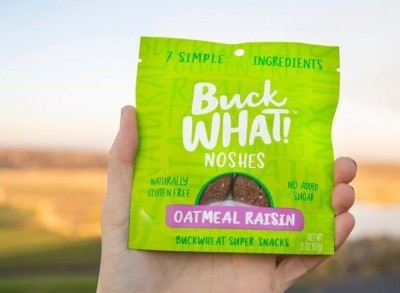New sorghum varieties beat quinoa for protein content

The ancient grain is attracting attention among players in the plant-based sector and, according to Bice, there are several “major food players” currently exploring malted sorghum for meat analogs.
“The number one benefit is taste,” said Douglas Bice, market development director at the United Sorghum Checkoff Program, which collects levies from producers marketing sorghum in any form and pools the money to promote the industry.
“It’s a notch above other malted grains because it doesn’t leave an aftertaste […] and also, because of the starch structure of sorghum, it holds better. You don’t have a patty that crumbles and falls apart," he told FoodNavigator-USA.
According to the United Sorghum Checkoff progra, sorghum uptake in foodservice outlets grew by 29% between 2018 and 2019. The grain now appears on the menus of major US fast food outlets such as Taco Bell, Chick-fil-A, and Velvet Taco, giving it greater visibility and bringing it to a larger public.
In order to meet demand for this booming category, private seed companies have developed sorghum varieties with a higher protein content using traditional, non-GMO seed breeding techniques, said Bice. The grain currently has a protein content of between 10 and 11% but, by 2021, producers should be able to source varieties with a protein content of between 13 and 17%, he said.
“This would put it above quinoa, which is considered king at 13 to 14%. That’s a big move for those looking for plant-based proteins or meat substitutes,” Bice said, adding that the seed companies received partial funding from Sorghum Checkoff to explore these higher protein varieties.
Sorghum is not a ‘complete protein’ as it does not contain much lysine but it has a comparable level of protein to other ‘ancient’ grains and can be blended with other plant-based sources, such as pea, to balance this out, Bice previously told this site.
Sorghum-powered start-ups
According to Bice, food manufacturers have fueled a rise in demand for extruded sorghum, such as pops, pillows, and kibble which are
increasingly used in cereals and snack products, while sprouted sorghum is being added to baked products such as tortilla chips, croutons, stuffing, and Individually Quick Freezing (IQF) pastas.
Increasingly, manufacturers are drawing attention to the addition of sorghum in their products, Bice said.
Extruded snack manufacturer Ka-Pop! Snacks uses the grain as part of its branding, telling consumers its products are “powered by the ancient grain, sorghum”, while Massachusetts-based start-up Mark’s Mindful Munchies, which recently launched Pop Bitties, a range of air-popped, wholegrain sorghum, details the nutritional and environmental benefits of the grain on its products.
Cereal, pasta, and cake mix manufacturer Grain Berry, owned by Silver Palet, controls the licensure for Onyx sorghum, a variety of dark burgundy sorghum that has a higher antioxidant content. Grain Berry makes on-pack claims
Sorghum blends well with other ingredients. One company doing this is RightRice, which blends lentil, chickpea, pea and rice flour to create protein- and fiber-rich rice grains, and adds quinoa and sorghum to its ancient grain varieties.
A sustainable superfood
Sorghum has an impressive sustainability story to tell. The crop, which is cultivated in large swathes of the US from North Dakota to Texas, Colorado to Illinois, originates from sub-Sahara Africa, and thrives in poor soils that are scare in water and nutrients.
“It’s not genetically modified but through its own seed genetics has developed a durability that other crops don’t have,” said Bice.
More than 91% of US sorghum farmers do not irrigate, relying instead on natural rainfall, while sorghum cultivation is less detrimental to soil health than other food crops because around three-quarters of US sorghum farmers use either conservation tillage or no-till practices, according to Bice. This is because sorghum seeds need solar heat and so they are planted just a few centimeters below the surface of the soil.
“[…] All the soil microbiome is left intact and you get less soil blown away with wind erosion,” Bice said, adding that sorghum also tends to be grown as a rotational crop in the US.
“This means it is not grown in a monoculture and that [promotes] weed and pest control. When you rotate in other crops you are naturally disrupting pests and therefore use fewer pesticides or insecticides.”






















